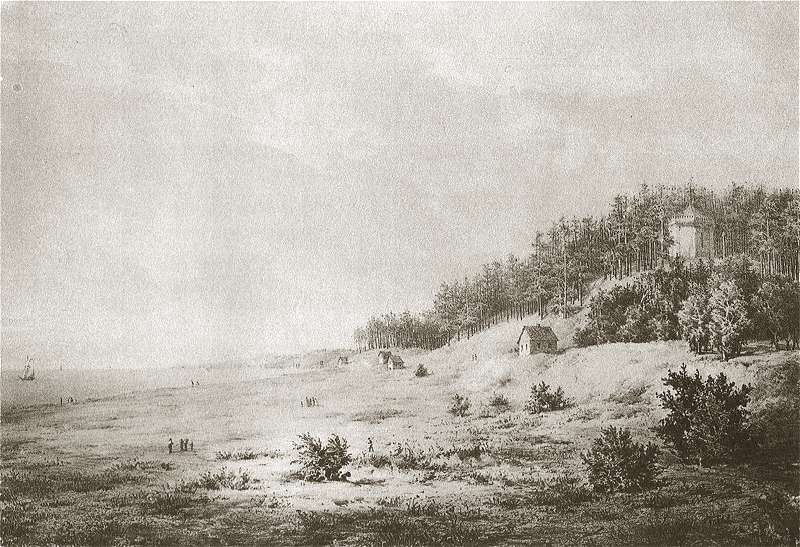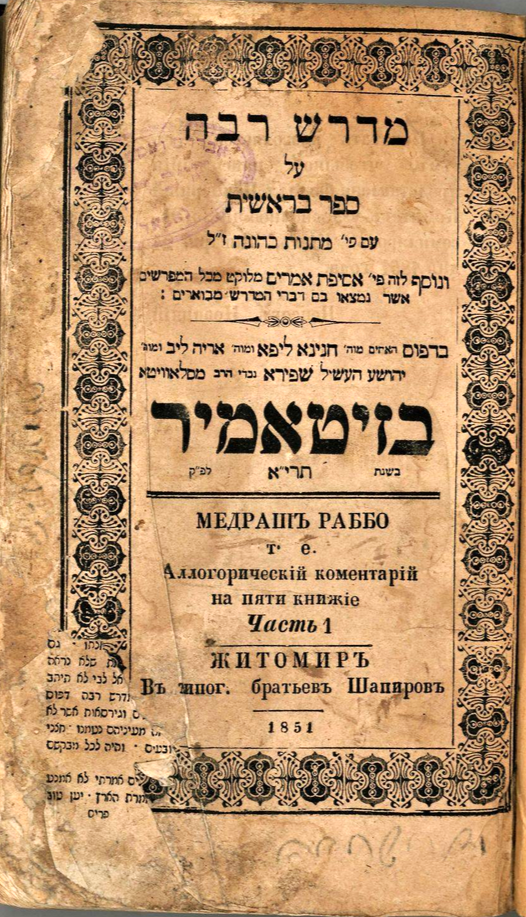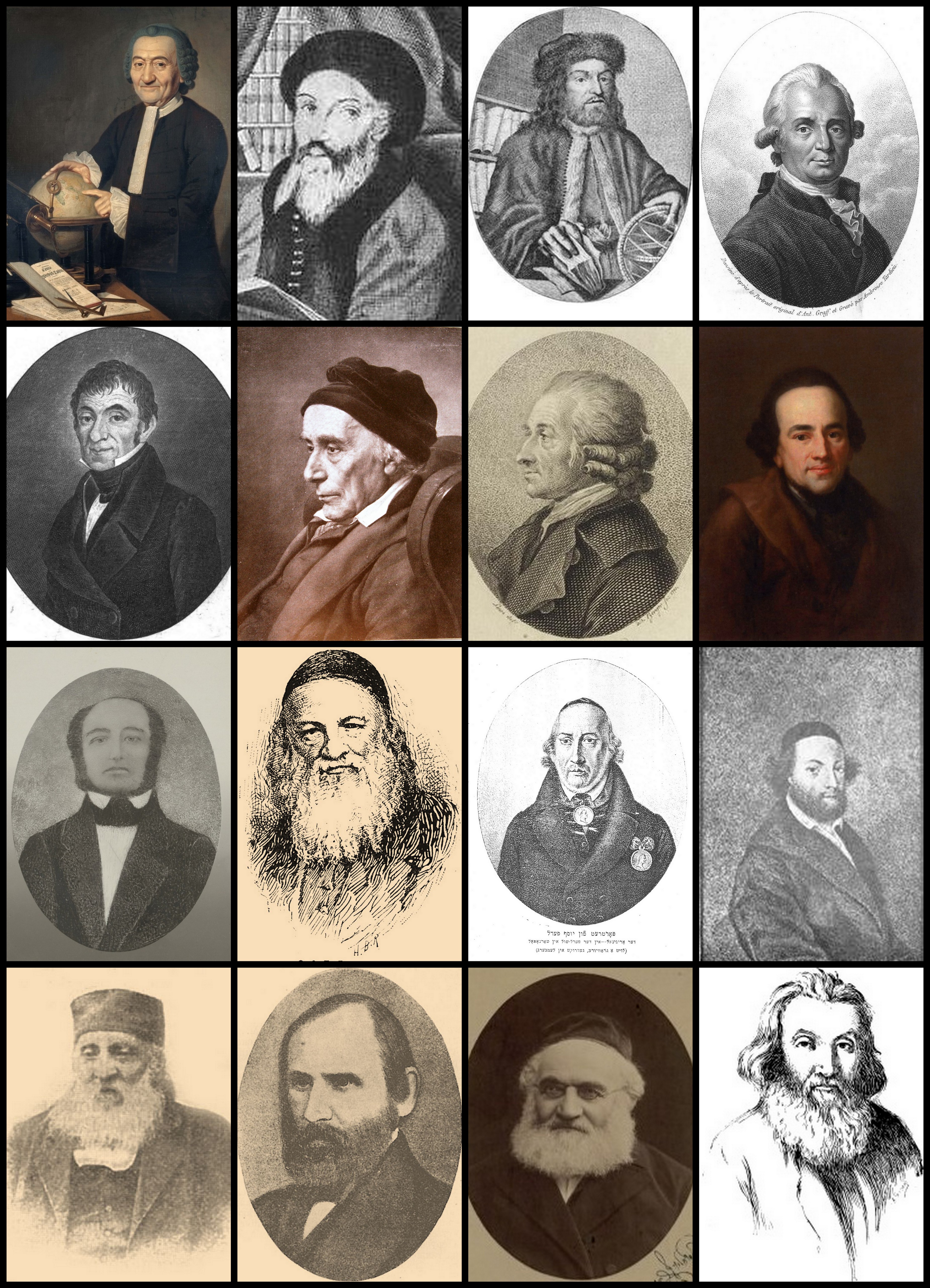|
Ezekiel Feivel Ben Ze'ev Wolf
Yechezkel Feivel ben Ze'ev Wolf (; 1755–1833) was the Maggid in Vilnius in the early 19th century and the author of several books, including ''Toldos Adam'', a hagiography of Rabbi Zalman of Vilna, the famed brother of Chaim of Volozhin and student of the Vilna Gaon. Biography Ezekiel Feivel was born in Polangen in 1755. Early in life he filled the position of rabbi in his native town, and later at Deretschin. He then traveled as a ''maggid'' through Germany and Hungary, and, after residing for some time at Breslau, returned to Polangen and devoted himself to literary work. In 1811 he was appointed rabbi to the community of Vilna, which position he filled until his death. Reception and Analysis of ''Toldos Adam'' Feivel's ''magnum opus'', the biography ''Toldos Adam'', achieved singular success in the rabbinic world. It is one of the few biographies which is cited in halachic works, including those of such leading scholars as Rabbi Akiva Eiger, Rabbi Ephraim Zalman Margolioth ... [...More Info...] [...Related Items...] OR: [Wikipedia] [Google] [Baidu] |
Palanga
Palanga (; ; ) is a resort town, resort city in western Lithuania, on the shore of the Baltic Sea. Palanga is the busiest and the largest summer resort in Lithuania and has sand, sandy beaches (18 km, 11 miles long and up to 300 metres, 1000 ft wide) and sand dunes. Officially Palanga has the status of a city municipality and includes Šventoji, Lithuania, Šventoji, Nemirseta, Būtingė, Palanga International Airport and other settlements, which are considered as part of the city of Palanga. Etymology The name of the town is likely of Curonian language, Curonian origin, as proposed by the linguist Kazimieras Būga. The primary argument is the suffix "''-ng-''", which is particularly distinctive of Curonian toponyms (Gandinga, Ablinga, Būtingė, etc.). The root ''pal-'', furthermore, is also associated with the landscape of lowlands or marshes. This is exemplified by the Lithuanian ''palios'', which translates to "large marsh", and the Latvian language, Latvian ''pa ... [...More Info...] [...Related Items...] OR: [Wikipedia] [Google] [Baidu] |
Joseph Saul Nathansohn
Joseph Saul Nathansohn (1808–1875) () was a Polish rabbi and posek, and a leading rabbinical authority of his day. Biography Rabbi Nathansohn was born at Berezhany (Berzan), Galicia (today's western Ukraine); he was the son of Aryeh Lebush Nathanson, rabbi at Berzan and author of "Bet El." He studied Talmud at Lviv (Lemberg) together with his brother-in-law Mordecai Zeeb Ettinger. In the 1830s in Lemberg—then under the rule of the Austrian Empire—he founded an informal study-group under his tutelage; this yeshiva attracted some of the most brilliant students in Galicia. In 1857 Nathanson was elected rabbi of Lemberg, where he officiated for eighteen years. He was a widely recognized rabbinical authority, and was asked to rule on various contemporary issues; his rulings are still widely cited (for instance he was one of the first to permit the use of machinery in baking Matzah, which created a widespread halachic controversy';Codex Judaica'; by M. Kantor, 2005, p.267 [...More Info...] [...Related Items...] OR: [Wikipedia] [Google] [Baidu] |
Rabbis From Vilnius
A rabbi (; ) is a spiritual leader or religious teacher in Judaism. One becomes a rabbi by being ordained by another rabbi—known as ''semikha''—following a course of study of Jewish history and texts such as the Talmud. The basic form of the rabbi developed in the Pharisaic (167 BCE–73 CE) and Talmudic (70–640 CE) eras, when learned teachers assembled to codify Judaism's written and oral laws. The title "rabbi" was first used in the first century CE. In more recent centuries, the duties of a rabbi became increasingly influenced by the duties of the Protestant Christian minister, hence the title "pulpit rabbis." Further, in 19th-century Germany and the United States, rabbinic activities such as sermons, pastoral counseling, and representing the community to the outside all increased in importance. Within the various Jewish denominations, there are different requirements for rabbinic ordination and differences in opinion regarding who is recognized as a rabbi. Non-Ortho ... [...More Info...] [...Related Items...] OR: [Wikipedia] [Google] [Baidu] |
19th-century Lithuanian Rabbis
The 19th century began on 1 January 1801 (represented by the Roman numerals MDCCCI), and ended on 31 December 1900 (MCM). It was the 9th century of the 2nd millennium. It was characterized by vast social upheaval. Slavery was abolished in much of Europe and the Americas. The First Industrial Revolution, though it began in the late 18th century, expanded beyond its British homeland for the first time during the 19th century, particularly remaking the economies and societies of the Low Countries, France, the Rhineland, Northern Italy, and the Northeastern United States. A few decades later, the Second Industrial Revolution led to ever more massive urbanization and much higher levels of productivity, profit, and prosperity, a pattern that continued into the 20th century. The Catholic Church, in response to the growing influence and power of modernism, secularism and materialism, formed the First Vatican Council in the late 19th century to deal with such problems and confirm ce ... [...More Info...] [...Related Items...] OR: [Wikipedia] [Google] [Baidu] |
People From Valozhyn
The term "the people" refers to the public or Common people, common mass of people of a polity. As such it is a concept of human rights law, international law as well as constitutional law, particularly used for claims of popular sovereignty. In contrast, a people is any plurality of Person, persons considered as a whole. Used in politics and law, the term "a people" refers to the collective or community of an ethnic group or nation. Concepts Legal Chapter One, Article One of the Charter of the United Nations states that "peoples" have the right to self-determination. Though the mere status as peoples and the right to self-determination, as for example in the case of Declaration on the Rights of Indigenous Peoples, Indigenous peoples (''peoples'', as in all groups of indigenous people, not merely all indigenous persons as in ''indigenous people''), does not automatically provide for independence, independent sovereignty and therefore secession. Indeed, judge Ivor Jennings i ... [...More Info...] [...Related Items...] OR: [Wikipedia] [Google] [Baidu] |
Midrash Rabba
Midrash Rabba or Midrash Rabbah can refer to part of or the collective whole of specific aggadic midrashim on the books of the Torah and the Five Megillot, generally having the term "Rabbah" (), meaning "great," as part of their name. These midrashim are as follows: *Genesis Rabbah *Exodus Rabbah *Leviticus Rabbah *Numbers Rabbah * Deuteronomy Rabbah * Song of Songs Midrash * Ruth Rabbah * Esther Rabbah *Lamentations Rabbah *Ecclesiastes Rabbah The designation "Rabbah" was first applied to the midrash to Genesis, and then applied to the midrashim to the other books of the Pentateuch ( Vayikra Rabbah, Shemot Rabbah, etc.) which were copied, with Bereshit Rabbah, even in (later) manuscripts. This collection eventually came to be called "Midrash Rabbot" (i.e., "Midrash of the Rabbot"), to which the midrashim most in use in connection with prayers—to Shir HaShirim, Ruth, Esther, Lamentations, and Ecclesiastes—were subsequently added. Thus the Venice edition of 1545, in which ... [...More Info...] [...Related Items...] OR: [Wikipedia] [Google] [Baidu] |
Naphtali Hirz Wessely
Naphtali Hirz (Hartwig) Wessely (; 9 December 1725 – 28 February 1805) was a German-Jewish Hebraist and educationist. Family history One of Wessely's ancestors, Joseph Reis, fled from Podolia in 1648 on account of the Chmielnicki persecutions, during which his whole family had perished. After a brief sojourn in Kraków, Reis settled in Amsterdam, where he acquired great wealth, and where he, in 1671, was one of the signers of a petition to the Dutch government requesting permission to erect a synagogue. Together with his younger son Moses (Naphtali Hirz's father), Reis later settled in Wesel on the Rhine, whence the family name "Wessely" originated. In the synagogue at Wesel (destroyed during ''Kristallnacht'') preserved some ritual paraphernalia presented to it by Moses Reis Wessely, who, upon the advice of the Prince of Holstein, whose purveyor he was, removed to Glückstadt, then the capital of Sleswick. He established there a factory of arms. King Frederick VI of Denmark l ... [...More Info...] [...Related Items...] OR: [Wikipedia] [Google] [Baidu] |
Moses Mendelssohn
Moses Mendelssohn (6 September 1729 – 4 January 1786) was a German-Jewish philosopher and theologian. His writings and ideas on Jews and the Jewish religion and identity were a central element in the development of the ''Haskalah'', or 'Jewish Enlightenment' of the eighteenth and nineteenth centuries. Born to a poor Jewish family in Dessau, Principality of Anhalt, and originally destined for a rabbinical career, Mendelssohn educated himself in German thought and literature. Through his writings on philosophy and religion he came to be regarded as a leading cultural figure of his time by both Christian and Jewish inhabitants of German-speaking Europe and beyond. His involvement in the Berlin textile industry formed the foundation of his family's wealth. His descendants include the composers Fanny and Felix Mendelssohn; Felix's son, chemist Paul Mendelssohn Bartholdy; Fanny's grandsons, Paul and Kurt Hensel; and the founders of the Mendelssohn & Co. banking house. Lif ... [...More Info...] [...Related Items...] OR: [Wikipedia] [Google] [Baidu] |
Maskilim
The ''Haskalah'' (; literally, "wisdom", "erudition" or "education"), often termed the Jewish Enlightenment, was an intellectual movement among the Jews of Central and Eastern Europe, with a certain influence on those in Western Europe and the Muslim world. It arose as a defined ideological worldview during the 1770s, and its last stage ended around 1881, with the rise of Jewish nationalism. The movement advocated against Jewish reclusiveness, encouraged the adoption of prevalent attire over traditional dress, while also working to diminish the authority of traditional community institutions such as rabbinic courts and boards of elders. It pursued a set of projects of cultural and moral renewal, including a revival of Hebrew for use in secular life, which resulted in an increase in Hebrew found in print. Concurrently, it strove for an optimal integration in surrounding societies. Practitioners promoted the study of exogenous culture, style, and vernacular, and the adoption of ... [...More Info...] [...Related Items...] OR: [Wikipedia] [Google] [Baidu] |
Chaim Elazar Spira
Chaim Elazar Spira (December 17, 1868 – May 13, 1937), also known as the Minchas Elazar after his magnum opus, was a rebbe of the Hasidic Munkacs dynasty. Family background Spira was born in Strzyżów, Kingdom of Galicia and Lodomeria, Austria-Hungary, now part of Poland, where his grandfather, Shlomo Spira, was a rabbi. Chaim Elazar's father, Tzvi Hersh Spira, was from Spira family which had held rabbinical positions in Munkács dating back to the founder of the Munkács Hasidic dynasty, Tzvi Elimelech Spira of Dinov (Bnei Yisoschor), who was Chief Rabbi from 1828 to 1832. Spira became Chief Justice of the Rabbinical Court in Munkács in 1903, where he worked along with his father until the latter died in 1913. He succeeded his father as Chief Rabbi of Munkács and the surrounding communities. Biography Spira wrote and published over twenty books on the Jewish law, Torah, Hasidism, and religious philosophy and customs including the six-volume ''Minchas Elazar' ... [...More Info...] [...Related Items...] OR: [Wikipedia] [Google] [Baidu] |
Zvi Hirsch Chajes
Zvi Hirsch Chajes ( - November 20, 1805 - October 12, 1855; also Chayes or Hayot or Chiyos) was a Galician talmudic scholar. He is best known for his work ''Mevo Hatalmud'' (Introduction to the Talmud), which serves both as commentary and introduction. Chayes is also known as "The Maharatz Chajes" (), the Hebrew acronym for "Our Teacher, the Rabbi, Zvi Chayes". Early life Chajes was born in Brody. He studied under scholars of that time, particularly R. Ephraim Zalman Margulies. In addition to his talmudic education, he was educated in modern and classical languages and literature, as well as geography, history, and philosophy. In 1846, a law was promulgated in Austria compelling rabbinical candidates to pass a university examination in liberal arts and philosophy; Chajes received the degree of Doctor of Philosophy. Career At age twenty two, he was called to occupy a rabbinic position in the district of Zhovkva (Zolkiev), Galicia. In this position, he fought against innova ... [...More Info...] [...Related Items...] OR: [Wikipedia] [Google] [Baidu] |
Ephraim Zalman Margolioth
Ephraim Zalman Margulies (sometimes transcribed as Margolis) (19 December 1762 – 24 August 1828) () was a Galician rabbi born in Brody, brother of Chaim Mordechai Margulies. Biography He received his Talmudic education at different yeshivas, in which he distinguished himself for the acuteness of his intellect and for his astonishing memory. His correspondence with Ezekiel Landau and other leading Talmudists soon gained for him a high reputation. He established a banking-house which proved so successful that within a short time he became quite wealthy. In 1785 he published his responsa entitled ''Bet Hadash ha-Hadashot'', and in the following year the rabbis of Brody elected him one of their number. Being of independent means, he opened in his house a yeshivah of which he was the head; several of his pupils became eminent rabbis. Works Margolis was considered a high rabbinical authority. He published the following works: * ''Bet Efrayim'' (2 vols., Lemberg, 1809–10), commenta ... [...More Info...] [...Related Items...] OR: [Wikipedia] [Google] [Baidu] |







